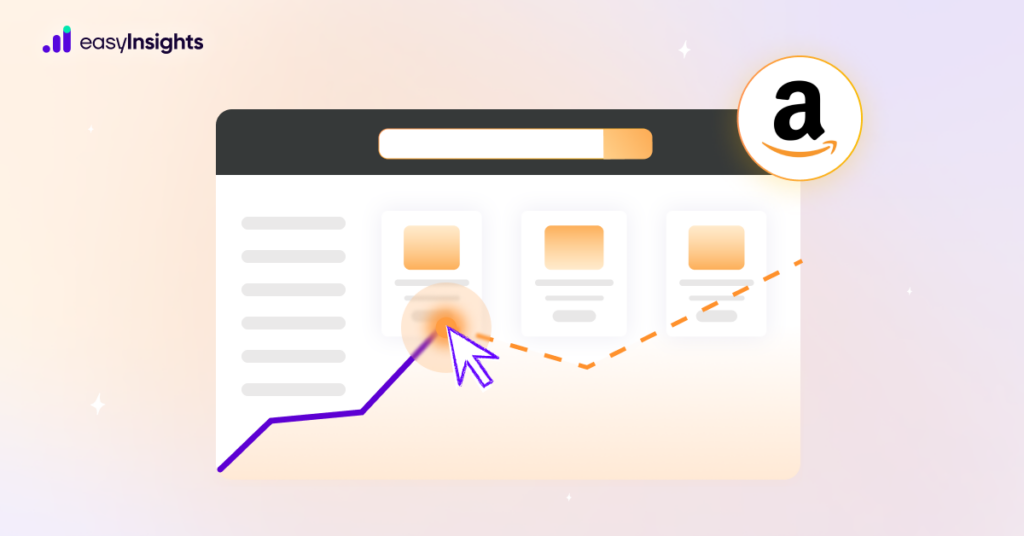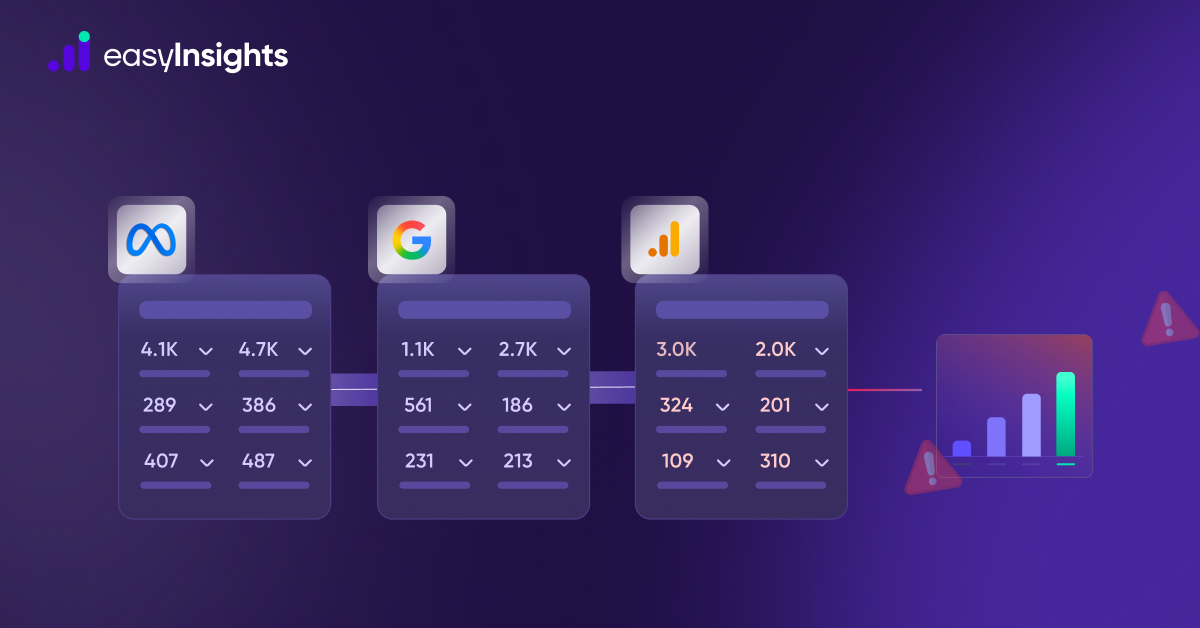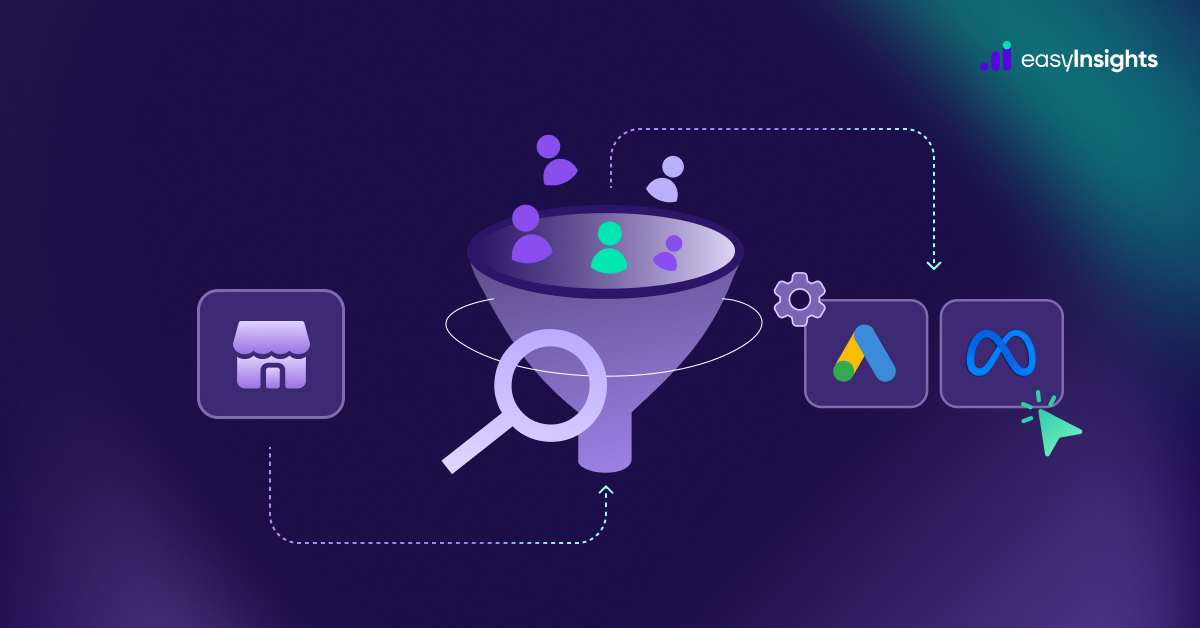
Amazon PPC is an effective way for businesses to boost their visibility and sales. In fact, Amazon PPC is the most crucial factor in driving business growth for over 75% of sellers. But you must track and optimize the right metrics to make the most of your advertising campaigns and ad spending. Since Amazon offers so many metrics for you to track, so choosing the right metric for your campaigns can be a hassle.
This blog will help you understand some vital Amazon PPC metrics and how you can optimize them to boost return on your ad spend.
Jump ahead to:
What Are Some of the Most Important Amazon PPC Metrics?
Like other marketing and advertising platforms, Amazon PPC also offers a plethora of KPIs for ad campaigns, like clicks, impressions, total ad spend, overall sales, etc. But if you were to understand the performance of your campaigns and optimize them, you cannot rely on mere click and impression numbers.
Instead, you should focus on these four metrics to measure the performance of your Amazon PPC campaigns:
- Advertising Cost of Sales (ACoS)
- Cost-Per-Click (CPC)
- Click-Through Rate (CTR)
- Conversion Rate (CR) or Order Session Percentage
Additional Read: Is Affiliate Marketing Worth Pursuing?
Which Amazon PPC Metrics Should You Track?
Out of the four metrics, the conversion rate is the most important metric, followed by CTR, CPC, and ACoS, in that order. However, your Amazon PPC campaign’s primary metric may differ depending on your business goals and advertising strategy.
So, let us explore what the four metrics tell us about PPC campaigns to understand when to use them and learn different ways to optimize them.
Conversion Rate (CR)
Another metric that depends on ad clicks is the Conversion Rate (CR). The metric measures the ratio of conversions (sales) to clicks on your ads. A high conversion rate metric shows that users not only click on your ad, but when they do, they also purchase your products.
CR = Total number of orders / Total number of clicks
Optimizing Conversion Rate in Amazon PPC Campaigns
Whether you sell a product or not, you must pay Amazon whenever a customer clicks on your ad. So, you must aim for the highest possible conversion rate for your campaigns. And since your ads successfully bring customers to your listing, the only way to boost the conversion rate is to have a great product and an even better listing. Here is how you can ensure that more clicks on ads convert into sales:
- Use high-quality images and video demos to showcase your product and gain the customers’ trust.
- Give a detailed product description by listing features, benefits, and competitor comparisons so customers know exactly what to expect.
- Use promotional tactics like limited-time discounts, coupons, and price cuts to create urgency and encourage buyers to checkout with your product.
Click-Through Rate (CTR)
As you know, impressions are when your ads are displayed on a customer’s screen, while clicks are the number of customers who click on your ads. And Click-through Rate or CTR is the ratio of clicks to impressions. A high CTR means that your ads perform well and people are interested in your products.
CTR = Clicks / Impressions
Optimizing CTR in Amazon PPC Campaigns
CTR is an important metric that helps you understand if your product is appealing and encourages your target market to click on your ads. So, a higher CTR is always a good sign as long as you are also generating sales. But, in case your campaigns are plagued with low CTR, here is how you can change that:
- Use high-definition main images for your products, as 40% of customers are more likely to click on them.
- Use promotional tactics like adding a coupon clipping on your product listings to grab customers’ attention.
- If you have an adequate ad budget, you can place higher bids to display your ads on top of page 1 because over 50% of the time, customers click the first product on Amazon SERP.
Additional Read: 6 Ways to Use Google Trends for SEO & Content Marketing
Cost-Per-Click (CPC)
Cost-Per-Click or CPC is the amount you pay to Amazon every time a customer clicks on your ad. A lower CPC is necessary to maximize the return on your investment.
So, when should you track CPC? If you work with a limited advertising budget, you must actively track CPC, as it helps you prevent overspending on bids. Also, measuring CPC can help determine the optimal bidding strategy for future campaigns.
Optimizing CPC in Amazon PPC Campaigns
Here are some ways you can optimize CPC:
- Bid for keywords relevant to your product or niche so ads only appear on SERPs and listings similar to your product.
- Instead of using broad and phrase match, use exact match type for keyword matching to prevent your ads from appearing for irrelevant keywords and avoid paying for irrelevant clicks.
- If you have a good organic ranking, you can place lower bids for keywords to show ads at the bottom of page 1 or the top of page 2 to reduce your CPC.
Advertising Cost of Sales (ACoS)
Advertising Cost of Sales or ACoS is the ratio of advertising spend to sales. It shows how much you spend on ads for every dollar you earn from sales. The lower the ACoS, the better the performance of your PPC, as a lower ACoS metric equals more profits.
ACoS = (Ad Spend / Ad Revenue) x 100
Another metric used interchangeably with ACoS is the Return on Ad Spend (RoAS). So, are the two the same or distinct metrics? RoAS is used when working with Google Ads. It is the ratio of advertising expenses to conversions or sales.
Optimizing ACoS in Amazon PPC Campaigns
A high ACoS is not always a problem because it only impacts sales generated through ads. For instance, when you launch a product, ACoS can remain high for a substantial period because you must spend more on ads to boost visibility and sales. Similarly, ranking for highly competitive keywords will require higher bids increasing the ACoS of your campaigns.
Besides, if you are investing in ads only to boost brand awareness, a high ACoS is not an issue either. However, in the long run, a high ACoS signifies a lower ROI, and here is how you can optimize it:
- Optimize product listings using relevant keywords in titles, meta descriptions, and URLs. Also, include high-quality images and proper descriptions of your products.
- Identify keywords that bring the most sales and spend most of your ad budget on those keywords.
- Negative keywords prevent your ads from displaying irrelevant searches. Removing these keywords through negative targeting ensures your ads are displayed only to customers interested in your product. As a result, you do not pay for irrelevant ad clicks.
- Experiment with automatic and manual bidding strategies to see how they affect your campaigns’ ACoS. Also, when bidding, manually adjust your bids based on the performance of your campaigns.
Additional Read: Tips and Tricks: 6 Best Tactics for Ecommerce Marketing
What Are Some Tips and Tricks for Optimizing Amazon PPC Campaigns?
Now that you know how you can optimize important Amazon PPC metrics, here are some additional tips to keep in mind:
1. Use Negative Targeting
When you create a campaign, Amazon PPC gives you the option of negative targeting. You can use negative targeting to list keywords and product listings where you do not want to display your ads. As a result, your ads are displayed only to relevant audiences, positively impacting all vital metrics, and preventing excess ad expenditure.
2. Focus on Relevant Metrics
You do not want to measure all the metrics for all your campaigns. Instead, align metrics to your business goals. For example, if you aim to increase sales, you should measure ACoS and Conversion Rates. However, if you wish to spread the word about your products and boost their visibility, you should track only impressions and CTR for your campaigns.
3. Use Benchmarks
No set number or range defines a profitable Amazon PPC metric. The ideal KPI varies depending on the industry type, product category, or keyword competition. So, to get a clear picture of your performance, you must use PPC reporting tools that show benchmarks.
You can benchmark your KPIs against numbers done by competing brands to see how you perform compared to the industry average. Besides, you should also benchmark your current performance with past performance to get a better picture of your Amazon PPC success.
4. Monitor Your Campaigns Regularly
Lastly, you must monitor your Amazon PPC campaign regularly to optimize your ads and improve ROI. Active monitoring will help you identify trends without delay and act on them immediately. For instance, if a keyword generates clicks without conversions, you can lower the bid and reduce your ad spend.
Similarly, you can identify campaigns that are not generating sales and update the ad copy or improve the product listing to boost sales. By keeping track of all your campaigns, you can understand the needs and wants of your target customers and refine your targeting for better results.
Bonus Read: How EasyInsights works with First-Party Data for Data Activation and Enrichment

EasyInsights works with first-party data for data activation and data enrichment in a few key ways:
Data Collection and Transformation:
- EasyInsights connect directly to your martech allowing it to access and extract the raw first-party data you’ve collected.
- Data Transformation: EasyInsights then cleans, normalizes, and enriches the data to make it usable for activation purposes. This may involve tasks like:
- Formatting data: Ensuring all data points are in a consistent format.
- Handling missing values: Filling in missing data points or removing them according to your preferences.
- Enriching data: Adding additional data points from other sources to create a more comprehensive picture of your customers.
Data Activation:
- Segmentation and Targeting: It allows you to segment your audience based on various criteria like demographics, behavior, and interests using the enriched data.
- Multi-channel Marketing: You can then use these segments to activate your audience across different marketing channels like email, social media, and advertising platforms.
- Customer Relationship Management (CRM): The data can be used to personalize outreach and interactions with customers within your CRM system.
- Marketing Attribution: EasyInsights can help you understand how different marketing channels contribute to conversions and optimize your marketing spend accordingly.
Key Feature:
- Offers features like customer data platform (CDP) capabilities, marketing automation, and campaign management tools.
- Focuses on reverse ETL (extracting data from your warehouse and sending it to marketing tools) and offers pre-built integrations with various marketing platforms.
EasyInsights is a marketer’s preferred tool for first party data activation.
In this age of cross-channel marketing, EasyInsights offers a comprehensive platform to collect, store, and transform all your first-party data.
EasyInsights enhances marketing campaign efficiency in a cookieless landscape with accurate ad signals. It helps brands step away from surface-level metrics and unleash the potential of first-party data to optimize marketing strategies, ensuring a superior Return on Ad Spend (ROAS). It does all this, while being a highly affordable no-code platform with an exceptional customer support apparatus.
Sign up for a demo today to see EasyInsights in action.








